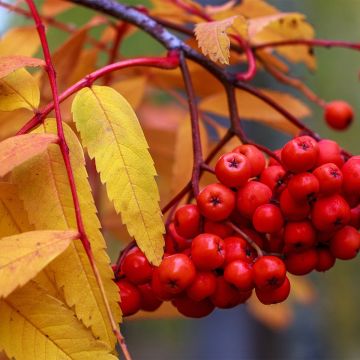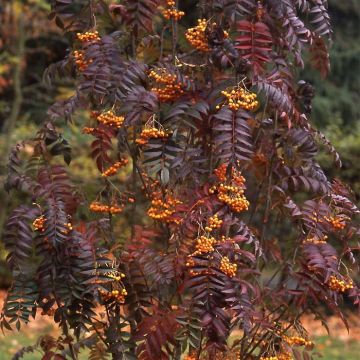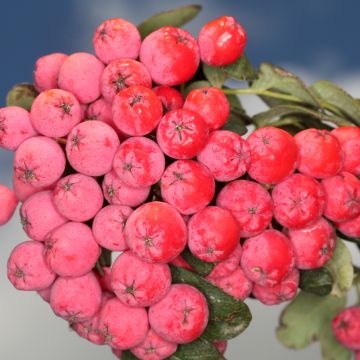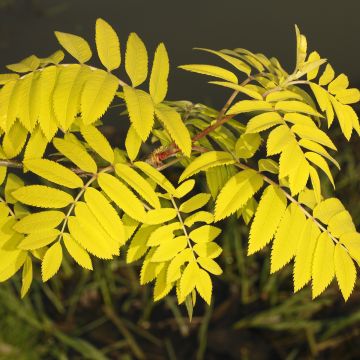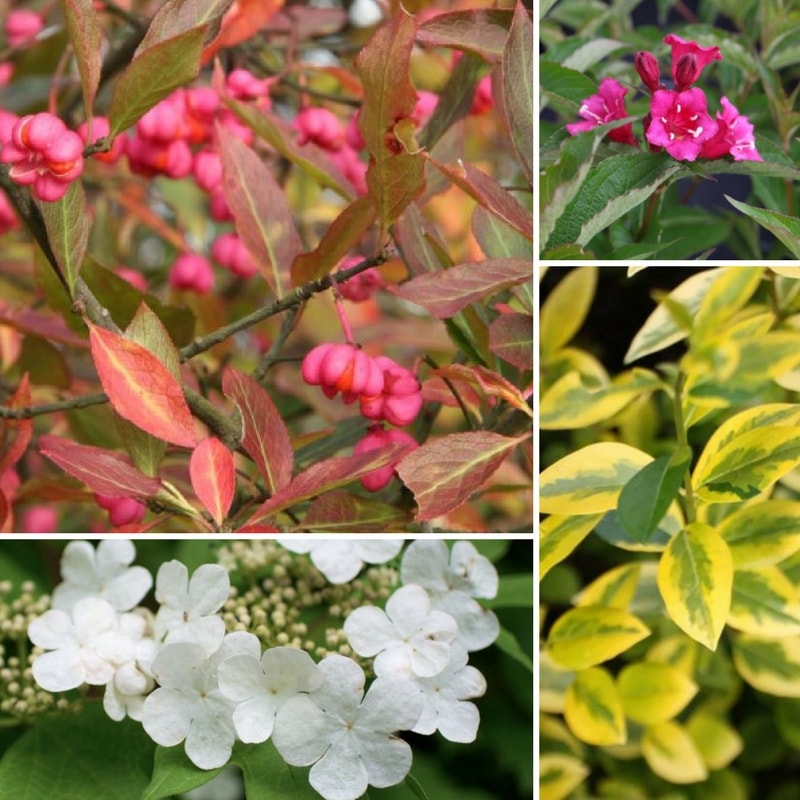

Sorbus filipes - Rowan
Sorbus filipes - Rowan
Sorbus filipes
Rowan, Mountain Ash
Special offer!
Receive a €20 voucher for any order over €90 (excluding delivery costs, credit notes, and plastic-free options)!
1- Add your favorite plants to your cart.
2- Once you have reached €90, confirm your order (you can even choose the delivery date!).
3- As soon as your order is shipped, you will receive an email containing your voucher code, valid for 3 months (90 days).
Your voucher is unique and can only be used once, for any order with a minimum value of €20, excluding delivery costs.
Can be combined with other current offers, non-divisible and non-refundable.
Home or relay delivery (depending on size and destination)
Schedule delivery date,
and select date in basket
This plant carries a 24 months recovery warranty
More information
We guarantee the quality of our plants for a full growing cycle, and will replace at our expense any plant that fails to recover under normal climatic and planting conditions.
Does this plant fit my garden?
Set up your Plantfit profile →
Description
Sorbus filipes is a botanical species of Rowan that will delight collectors and enthusiasts of rare plants. This deciduous bush, native to Tibet and southern central China, has a slow growth rate and features particularly elegant foliage, divided into small green leaflets that turn scarlet in autumn. The flowering of this rowan is rather discreet, followed by the formation of small fruits in clusters that change from dark red to white in August and September.
Sorbus filipes belongs to the Rosaceae family like all rowans. Its distribution range is vast, extending from Tibet to southern central China. It is a species of temperate climate, experiencing humid summers. In the wild, it can be found at altitudes of up to 3,600 m, in sparse forests, growing in shallow, peaty soils on limestone rocks. This bush exhibits a slow growth rate and reaches a height of 2 to 4 m. The young shoots are reddish-brown and hairy, eventually turning grey-black and displaying prominent lenticels. The oval buds measure between 3 and 6 mm long and are covered with a few hairy scales. The foliage is odd-pinnate, meaning that each leaf is composed of an odd number of leaflets. Their main vein is hairy and slightly winged. These leaves measure 5 to 10 cm long. The very small, elliptical to ovate leaflets measure 0.6 to 1.4 cm wide and 4 to 8 mm long; they are toothed and smooth. There are 8 to 13 pairs of leaflets per leaf. The foliage is green in summer, turning scarlet in autumn before falling. This rowan flowers in May-June, depending on the climate. The flowers are gathered in pendulous corymbs, often partially hidden behind the leaves. They emit a light fragrance. The fruits, which develop in August and September, are initially dark red and then turn white. They are oval and measure 7 to 10 mm long. Sorbus filipes is apomictic, capable of producing a diploid embryo without fertilisation, which will then be genetically identical to its mother. This allows it to be reliably multiplied by sowing.
This Asian rowan has some requirements regarding soil and climate, but it should thrive in temperate regions. Given its rarity and delicacy, it should be prominently displayed, as a specimen or in front of a group of larger bushes. Sorbus filipes prefers a sunny position and moist, well-drained soil rich in humus. For better performance in less favourable climates, it is sometimes grafted onto Sorbus aucuparia. This rowan pairs particularly well with Rhododendron ponticum 'Variegatum', Magnolia stellata, Acer davidii (David's Maple), and Viburnum carlesii (Carles' Viburnum). These plants share the same growing conditions and highlight the scarlet foliage and attractive fruits of the Sorbus filipes.
Plant habit
Flowering
Foliage
Botanical data
Sorbus
filipes
Rosaceae
Rowan, Mountain Ash
China
Other Sorbus - Mountain Ash
View all →Planting and care
Sorbus filipes is best planted in autumn. It thrives in sunlight (not scorching), which enhances and accentuates the colour of its fruits and autumn foliage. It tolerates light shade better than other rowans. This tree does not like soils that are too dry, too calcareous, or too clayey. It prefers humus, damp, and well-drained ground. Place it sheltered from prevailing winds to prevent uprooting. Water it during dry periods. Remove dead wood or diseased branches. If necessary, at the end of winter before growth resumes, prune the crossing inner branches, retaining only the vigorous branches to maintain the good habit of the tree.
Mites, aphids, and scale insects are the main enemies of the rowan. Powdery mildew and sooty mould can also affect this tree.
Planting period
Intended location
Care
Planting & care advice
This item has not been reviewed yet - be the first to leave a review about it.
Similar products
Haven't found what you were looking for?
Hardiness is the lowest winter temperature a plant can endure without suffering serious damage or even dying. However, hardiness is affected by location (a sheltered area, such as a patio), protection (winter cover) and soil type (hardiness is improved by well-drained soil).

Photo Sharing Terms & Conditions
In order to encourage gardeners to interact and share their experiences, Promesse de fleurs offers various media enabling content to be uploaded onto its Site - in particular via the ‘Photo sharing’ module.
The User agrees to refrain from:
- Posting any content that is illegal, prejudicial, insulting, racist, inciteful to hatred, revisionist, contrary to public decency, that infringes on privacy or on the privacy rights of third parties, in particular the publicity rights of persons and goods, intellectual property rights, or the right to privacy.
- Submitting content on behalf of a third party;
- Impersonate the identity of a third party and/or publish any personal information about a third party;
In general, the User undertakes to refrain from any unethical behaviour.
All Content (in particular text, comments, files, images, photos, videos, creative works, etc.), which may be subject to property or intellectual property rights, image or other private rights, shall remain the property of the User, subject to the limited rights granted by the terms of the licence granted by Promesse de fleurs as stated below. Users are at liberty to publish or not to publish such Content on the Site, notably via the ‘Photo Sharing’ facility, and accept that this Content shall be made public and freely accessible, notably on the Internet.
Users further acknowledge, undertake to have ,and guarantee that they hold all necessary rights and permissions to publish such material on the Site, in particular with regard to the legislation in force pertaining to any privacy, property, intellectual property, image, or contractual rights, or rights of any other nature. By publishing such Content on the Site, Users acknowledge accepting full liability as publishers of the Content within the meaning of the law, and grant Promesse de fleurs, free of charge, an inclusive, worldwide licence for the said Content for the entire duration of its publication, including all reproduction, representation, up/downloading, displaying, performing, transmission, and storage rights.
Users also grant permission for their name to be linked to the Content and accept that this link may not always be made available.
By engaging in posting material, Users consent to their Content becoming automatically accessible on the Internet, in particular on other sites and/or blogs and/or web pages of the Promesse de fleurs site, including in particular social pages and the Promesse de fleurs catalogue.
Users may secure the removal of entrusted content free of charge by issuing a simple request via our contact form.
The flowering period indicated on our website applies to countries and regions located in USDA zone 8 (France, the United Kingdom, Ireland, the Netherlands, etc.)
It will vary according to where you live:
- In zones 9 to 10 (Italy, Spain, Greece, etc.), flowering will occur about 2 to 4 weeks earlier.
- In zones 6 to 7 (Germany, Poland, Slovenia, and lower mountainous regions), flowering will be delayed by 2 to 3 weeks.
- In zone 5 (Central Europe, Scandinavia), blooming will be delayed by 3 to 5 weeks.
In temperate climates, pruning of spring-flowering shrubs (forsythia, spireas, etc.) should be done just after flowering.
Pruning of summer-flowering shrubs (Indian Lilac, Perovskia, etc.) can be done in winter or spring.
In cold regions as well as with frost-sensitive plants, avoid pruning too early when severe frosts may still occur.
The planting period indicated on our website applies to countries and regions located in USDA zone 8 (France, United Kingdom, Ireland, Netherlands).
It will vary according to where you live:
- In Mediterranean zones (Marseille, Madrid, Milan, etc.), autumn and winter are the best planting periods.
- In continental zones (Strasbourg, Munich, Vienna, etc.), delay planting by 2 to 3 weeks in spring and bring it forward by 2 to 4 weeks in autumn.
- In mountainous regions (the Alps, Pyrenees, Carpathians, etc.), it is best to plant in late spring (May-June) or late summer (August-September).
The harvesting period indicated on our website applies to countries and regions in USDA zone 8 (France, England, Ireland, the Netherlands).
In colder areas (Scandinavia, Poland, Austria...) fruit and vegetable harvests are likely to be delayed by 3-4 weeks.
In warmer areas (Italy, Spain, Greece, etc.), harvesting will probably take place earlier, depending on weather conditions.
The sowing periods indicated on our website apply to countries and regions within USDA Zone 8 (France, UK, Ireland, Netherlands).
In colder areas (Scandinavia, Poland, Austria...), delay any outdoor sowing by 3-4 weeks, or sow under glass.
In warmer climes (Italy, Spain, Greece, etc.), bring outdoor sowing forward by a few weeks.
































